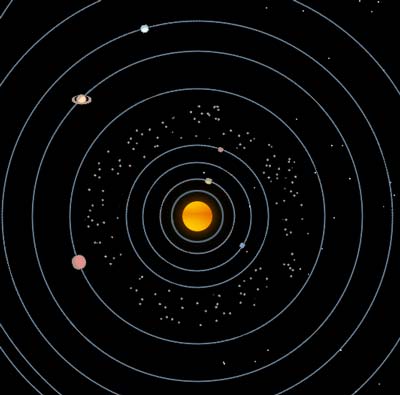Extraterrestrial Worlds
Exosolar planets are planets that do not revolve around our own sun. They orbit sun stars from near and distant galaxies, as far away as millions of light years, and as near as less than 10 light years.
More than 4,000 exosolar planets have been discovered in the visible universe as of 2020
Some of these exosolar planets lie in what is called the 'habitability zone', which means they have the necessary conditions that could support and sustain the existence of living life forms. They all hold the possibility of being home to simple organisms, complex land or sea creatures, and even intelligent beings such as us.
Whether they would like to admit it or not, astronomers are keenly interested in these exoplanets, for one reason and one reason alone: to discover which of these planets do, in fact, harbor intelligent life.
There seems to be growing evidence from interplanetary probes in our own solar system that some form of life may exist deep underground on Mars or perhaps on one of the many moons of Saturn or Jupiter. Yet keep in mind that there is only one Earth-sized, carbon-based, water-predominant planet in our own solar system, which is host to an enormously vast array of living creatures. If you’re going to look for intelligent life forms similar to earthlings, your search will have to take you out of our solar system to the planets of other stars.
How do astronomers find planets around other stars?
|
Because a planet is relatively close to its sun, powerful telescopes can’t see the planet becuse it is lost in the glare of its sun’s light. However, about 30 years ago, astronomers began to notice that some of the stars they observed had a slight wobble. They found that that wobble was being caused by the gravitational pull of a large planet orbiting around it.
So:
wobbly star = large planet
(large like Jupiter)
It stands to reason that, if we have many planets smaller than Jupiter in our own solar system, that other suns with Jupiter-size planets may also have smaller planets.
This is what’s making extraterrestrial contact so exciting. Before we knew that exosolar planets actually existed in the universe, SETI (the Search for Extraterrestrial Intelligence) and other organizations looking for extraterrestrial life were systematically, yet randomly, scanning the skies for any kind of frequency that might signal ET communication.
Now we can point our radio telescopes to certain stars that we know have planets, and listen to see if they’re talking to us. In the past, the only way we could send a message to a star was if we got a message from them first. This ascertained their location, allowing us to know exactly where to send a message to them.
Fortunately, we no longer have to wait. Astronomers have 1,800 precise locations in the night sky toward which to beam our message. Even more exciting, many of those stars with habitable exosolar planets are so close you can see them without a telescope. Since they're nearby, you could conceivably get a call-back in your own lifetime.
Windowpane Observatory’s ET Planet Finder Kit gives you all the information you will need to find out what kind of planets are orbiting other stars, how far away those stars are (so you can know when to expect a call-back), and even the habitability zone of where an Earth-like planet might reside orbiting that star.
We have selected the brightest stars that you doen’t even need a telescope to see. From your own back yard, you can show friends and family where ETs might be living.
Learn more about the ET Planet Finder Kit.
 See an animation of the movement of planets in our solar system.
See an animation of the movement of planets in our solar system. See amazing views from space
See amazing views from space
